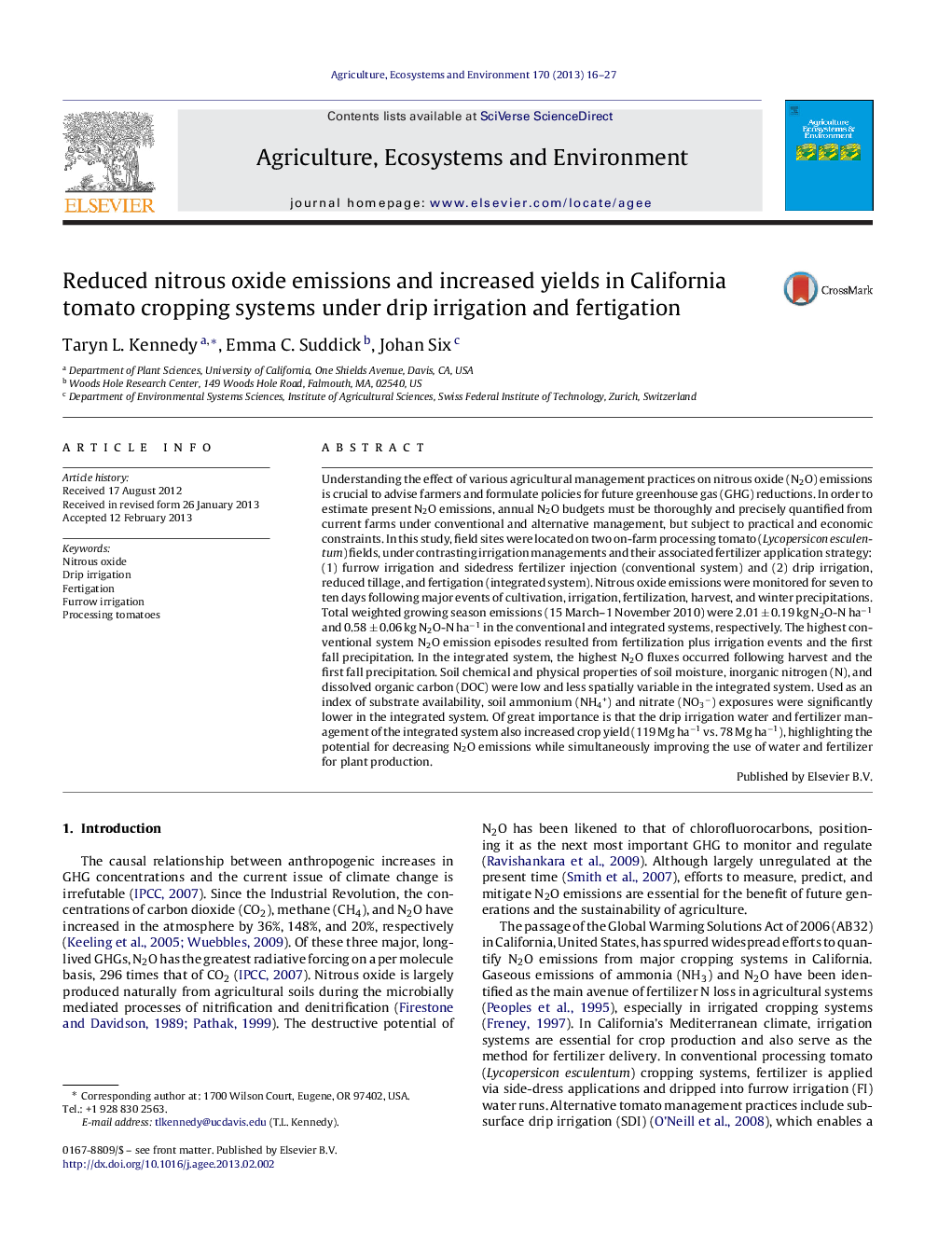| کد مقاله | کد نشریه | سال انتشار | مقاله انگلیسی | نسخه تمام متن |
|---|---|---|---|---|
| 2414203 | 1552082 | 2013 | 12 صفحه PDF | دانلود رایگان |

Understanding the effect of various agricultural management practices on nitrous oxide (N2O) emissions is crucial to advise farmers and formulate policies for future greenhouse gas (GHG) reductions. In order to estimate present N2O emissions, annual N2O budgets must be thoroughly and precisely quantified from current farms under conventional and alternative management, but subject to practical and economic constraints. In this study, field sites were located on two on-farm processing tomato (Lycopersicon esculentum) fields, under contrasting irrigation managements and their associated fertilizer application strategy: (1) furrow irrigation and sidedress fertilizer injection (conventional system) and (2) drip irrigation, reduced tillage, and fertigation (integrated system). Nitrous oxide emissions were monitored for seven to ten days following major events of cultivation, irrigation, fertilization, harvest, and winter precipitations. Total weighted growing season emissions (15 March–1 November 2010) were 2.01 ± 0.19 kg N2O-N ha−1 and 0.58 ± 0.06 kg N2O-N ha−1 in the conventional and integrated systems, respectively. The highest conventional system N2O emission episodes resulted from fertilization plus irrigation events and the first fall precipitation. In the integrated system, the highest N2O fluxes occurred following harvest and the first fall precipitation. Soil chemical and physical properties of soil moisture, inorganic nitrogen (N), and dissolved organic carbon (DOC) were low and less spatially variable in the integrated system. Used as an index of substrate availability, soil ammonium (NH4+) and nitrate (NO3−) exposures were significantly lower in the integrated system. Of great importance is that the drip irrigation water and fertilizer management of the integrated system also increased crop yield (119 Mg ha−1 vs. 78 Mg ha−1), highlighting the potential for decreasing N2O emissions while simultaneously improving the use of water and fertilizer for plant production.
► We monitored N2O emissions on-farm in two different tomato cropping systems.
► Reduced N2O emissions under drip irrigation and fertigation practices.
► Improved fertilizer and water use increases yields and reduces N2O losses.
Journal: Agriculture, Ecosystems & Environment - Volume 170, 15 April 2013, Pages 16–27